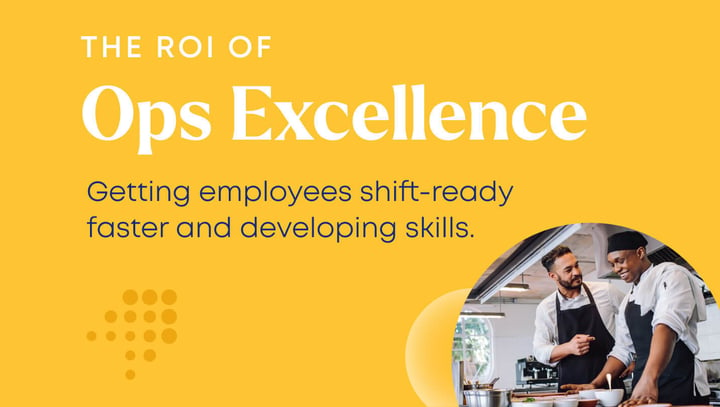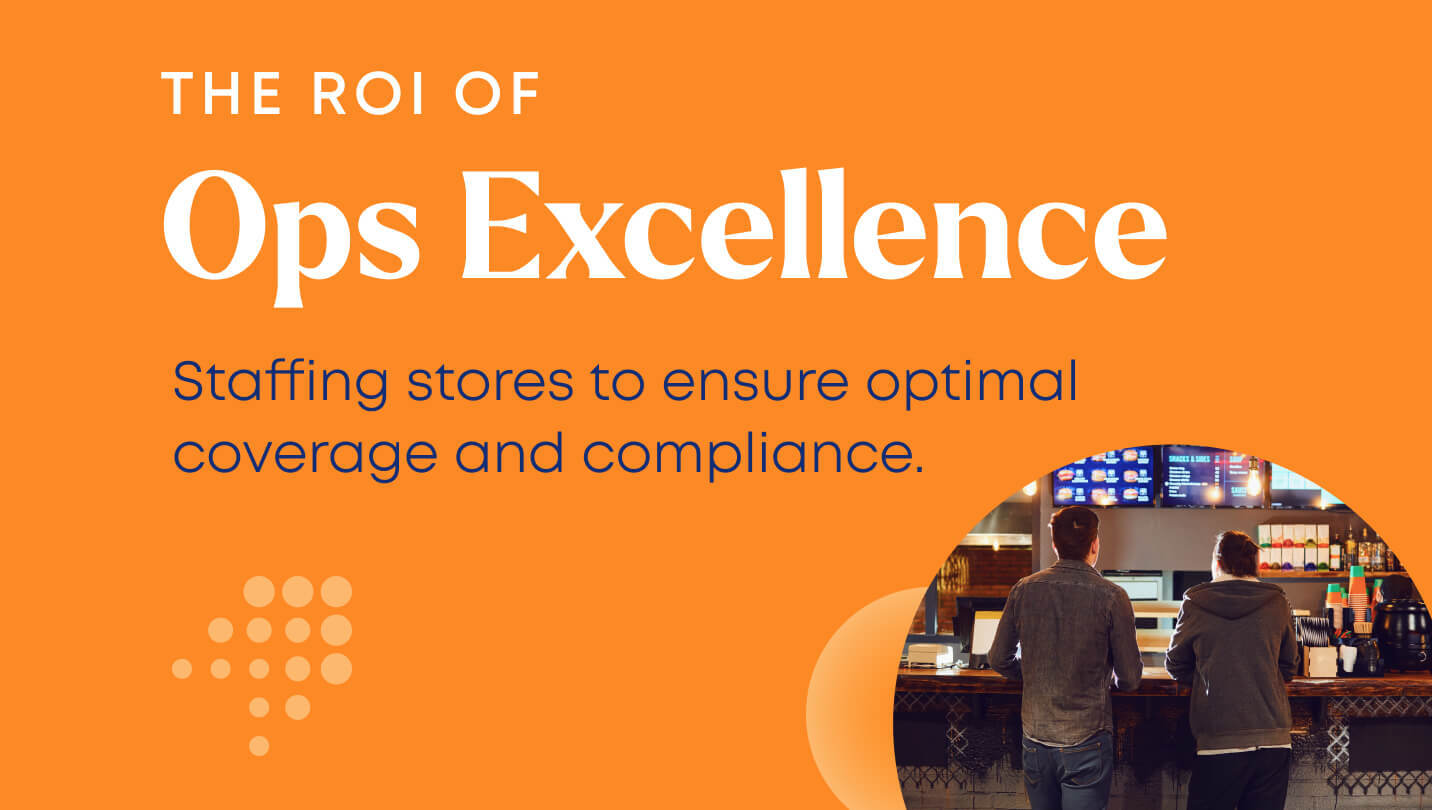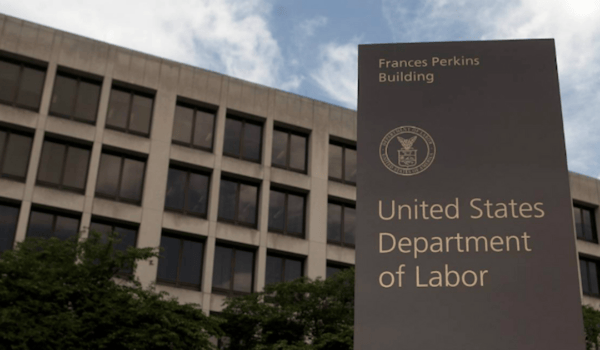
- Home
- Crunchtime Blog
- The ROI of Ops Excellence: How Restaurants Can Measure the Value of Better Scheduling and Labor Management

The ROI of Ops Excellence: How Restaurants Can Measure the Value of Better Scheduling and Labor Management
This is the fourth part in a five-part series about understanding the ROI of ops excellence in restaurants.
So far, we’ve outlined the overall value of ops excellence, explored how better inventory and food cost management impact profitability, and looked at the ROI of completing work correctly and on time.
Now, we’re focusing on the ROI of labor management–understanding the value of labor management through better scheduling and compliance and the impact on profitability and employee engagement.
Staffing shortages and labor costs are among the top challenges for restaurant and foodservice operators today. Restaurants must keep employees engaged and empowered, while also creating schedules that comply with all applicable labor laws at every store location. There is little margin for error, and the fear of being short-staffed or improperly staffed is very real in today’s tight labor market.
Restaurants that prioritize labor management and invest in tools for more efficient scheduling can gain a significant edge. But streamlining and automating these processes carries costs. You should expect a return on that investment.
Initiatives that drive better scheduling and labor management are worthwhile investments that pay for themselves through their value and impact on profitability, employee engagement, and retention.
But, as your organization plans for 2024, how do you make the internal business case to get the green light to move forward?
To make your business case and get the right initiatives approved, start tracking these key outcomes to see how better scheduling and labor management can deliver a clear return on your investment:
Time Spent On Scheduling - Automate the scheduling process
At each location, restaurants should track the time spent on each of the following scheduling tasks:
- Creating schedules
- Distributing schedules
- Communicating schedule changes
- Approving time off and schedule-swap requests
Each of these tasks can be time-consuming and tedious for managers. In today’s tight labor market, productivity is everything. Restaurant managers need to be active on the store floor, not behind a desk trying to decipher labor laws to create a compliant schedule.
In today’s digital era, manually creating and distributing schedules is no longer an efficient way to manage your team. A smart scheduling platform can automate the entire scheduling process to significantly reduce the amount of time required to create and distribute a schedule. With just one click, managers can automatically create a schedule for a single week or an entire pay period.
The schedule is then automatically sent to all employees, who can self-service changes like swapping shifts. Managers should be able to easily approve shift changes or time-off requests to keep the operation running smoothly.
Restaurants that can get more done with a smaller team have a huge advantage, and automation is often the easiest way to make this a reality. Significant time savings can be achieved by operators who prioritize automated scheduling.
Optimal Staffing - Balancing labor hours based on historical forecast data
When a restaurant manager manually creates a schedule, they must strike a careful balance. Scheduling too many employees for a shift will result in unnecessary labor expenses, while scheduling too few employees can impact the quality of your operation and degrade the guest experience. This process can be highly time-consuming and inefficient.
Restaurants should track how often they have no-show, no-call employees. A high occurrence might indicate that there is room to improve the balance of their schedule. Using historical data and your sales forecast, an automated scheduling platform should assign the right person, with the right skill level, to each shift, while accounting for the risk of no-shows, reducing the risk of errors, and also saving your managers a significant amount of time. For instance, be sure you're not scheduling all "C" employees on a Saturday night. You need a balanced shift with some A players, some B, and some C.
No-show employees can also impact the guest experience. Because your staff is directly tied to customer experience, restaurants should also measure guest satisfaction scores to understand how an optimal schedule impacts the quality of service. With every shift staffed correctly, you can rest assured that your store is positioned to deliver a premium experience. If your guest satisfaction scores continue to rise, it can often be linked to a balanced schedule.
Restaurants can also measure earned hours vs. actual hours to evaluate whether a shift is overstaffed or understaffed based on demand.
Your restaurant manager plays a critical role in managing labor costs by responding to the restaurant's sales that day and calling in extra people or sending people home as needed. If you are continuously overstaffing your shifts, it might be time to reevaluate your approach to scheduling in order to maintain profit margins. With access to real-time data on sales and current staffing levels, restaurant managers are empowered to make smarter decisions around profitability.

Employee Satisfaction - Empower your team with requesting time off, picking up or swapping shifts
Most restaurants would agree that employees are their number one asset. They are involved in almost every touchpoint in the guest experience. Given current labor shortages, restaurants are investing more than ever in empowering their employees in any way possible. One of these ways is to increase your employees’ satisfaction with scheduling flexibility.
The work environment of a restaurant can often be fast-paced and unpredictable. There are considerable benefits to giving employees easy access to an employee portal where they can view their schedule, certify time worked, request time off, request to pick up shifts, and indicate when tasks are completed.
Self-service options can give your team more control over their schedules and boost their overall satisfaction at work. With communication happening directly on their personal devices, employees can stay informed with all pertinent information. As a result, you can expect to significantly reduce the time and effort required to communicate across the organization.
Ensure Compliance - Stay compliant with payroll and labor laws across locations
Maintaining compliance and understanding payroll tax calculation is an ongoing challenge for many operators, as labor laws are continuing to expand with more complexity across the nation. In addition to Federal and State laws, restaurants must also stay aware and comply with laws like Fair Work Week.
Today’s restaurant managers have to do it all. Oftentimes, they are responsible for hiring, onboarding, training, scheduling, and overseeing the guest experience, as well as day-to-day operations that include inventory management, placing purchase orders, reconciling those orders, and more. Adding “ensuring labor law compliance” to this list can be overwhelming.
But when restaurants implement a system that can manage all applicable labor laws, this can provide a huge relief to managers. And happier managers are more likely to stay–which is where a tremendous amount of value can be recouped. According to a 2021 report from the National Restaurant Association, turnover costs $14,689 per general manager.
Additionally, restaurants can significantly cut down on occurrences like unintended overtime that often bring additional labor costs. During the schedule creation phase, the manager should know exactly where to expect overtime, so they can make edits to avoid or accommodate the issue. When managers track how often unintended overtime is happening and the associated costs, they can have more clarity about where improvements can be made.
A myriad of other labor law violations can also result in hefty fines for restaurants that fail to maintain compliance. Fair Work Week laws, also known as “predictive scheduling,” require managers to abide by a completely new set of laws when creating and distributing schedules. These laws vary from city to city and leave little room for flexibility. According to the US Department of Labor, two Connecticut-based restaurants paid $137,465 in back wages and liquidated damages to workers after violating minimum wage and overtime laws.
Labor laws should not be taken lightly, and restaurants should continuously track every violation and the associated penalties. Fortunately, these costly labor law infractions can be avoided by utilizing the proper automated scheduling tools.

In today’s competitive labor market, restaurants should be focused on creating effective strategies around labor management and scheduling. Understanding the value of labor management and automated scheduling can be felt throughout the organization. With the right tools, your restaurant managers can be empowered to actively control labor costs for greater profitability. On the other hand, operators who fail to prioritize labor and scheduling will feel the burdens of their inefficiencies and continue to play catch-up.
The outcomes explained above can also be realized in your organization. If you’re ready to learn how to calculate ROI and see Crunchtime how can improve your restaurant’s profitability, get in touch with us for a customized demo.
Stay tuned for the final part of this series, where we’ll focus on the ROI of getting employees shift-ready faster and developing skills to see how better training and development impact customer and employee experiences while reducing churn and costs.
Share this post
Related


Save Time, Empower Employees, and Maintain Compliance with Restaurant Scheduling Software

